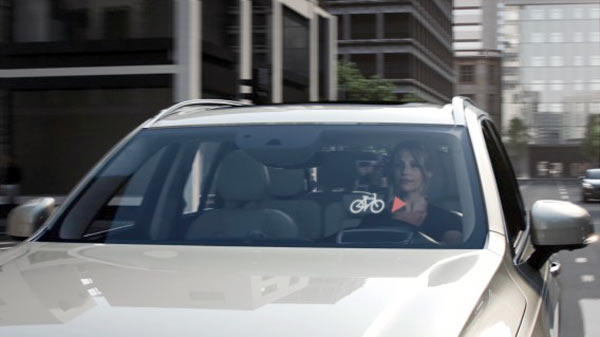The Consumer Electronics Show (CES) starts next week in Las Vegas, and to many is just a giant hall of iPhone accessories and TVs that are 3″ bigger than last year. However, using technology in a way to prevent car and bike collisions, Volvo has teamed up with helmet maker POC with an idea.
Volvo and POC will present the safety technology which consists of a connected car and helmet prototype that establishes 2-way communication offering proximity alerts to Volvo drivers and cyclists with the aim of reducing accidents. Established in early 2014, the project is using the cumulative skill and knowledge of the safety-conscious automaker and design-focused protection maker.
“Our partnership with Volvo is both humbling and rewarding and aligns very well with our mission to do the best we can to possibly save lives and to reduce the consequences of accidents for gravity sports athletes and cyclists,” says Stefan Ytterborn, POC CEO and founder. “Our mutual view and focus on safety has resulted in a unique safety concept that can improve road safety through increased interaction between motorists and cyclists.”
Check out the video and description of how it works…
The system would use smartphone cycling apps and the internet access of the car to broadcast the location of the bike to the car, and vice versa. Both an alert light in the helmet would alert the cyclist, and a heads-up display in the car would alert the driver if the car’s computer calculated an imminent collision.
They say this would be mostly useful where the car or the cyclist were not visible around a bend or other obstacle. Volvo has a project to eliminate deaths or serious injuries created by their cars by 2020, and are aggressively working on various ideas surrounding this. Volvo is obviously a leader in this area, yet it would take industry-wide adoption of a technology to really protect cyclists, and then we wonder if it would work, since a car would have a hard time calculating a collision or not as a cyclist rides on a road with a large quantity of traffic within a few feet of them. Would the system be able to tell whether a few inches of movement side-to-side is the difference between passing the cyclist or killing them? Hopefully, some of Volvo’s other technologies such as pedestrian collision sensors would also step in, and automatically brake the car
“We are proud to take this step with Volvo and what we will present at CES is only the first among many initiatives together. We are excited to see how we can continue to contribute to make cycling safer and further support our mission,” adds Stefan Ytterborn, POC CEO and founder.
Hopefully more info comes out as the doors to CES open up next Tuesday.
